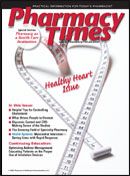Publication
Article
Pharmacy Times
Women and Hypertension: Still a Battle of the Sexes?
Dr. Page is an associate professor of clinical pharmacy and physical medicine and a clinical specialist, Division of Cardiology, University of Colorado Health Sciences Center, Schools of Pharmacy and Medicine.
In this day and age of advanced pharmacotherapies, evidence-based practice guidelines, and improved access to health care for cardiovascular disease (CVD), do gender disparities still exist regarding hypertension and its diagnosis and treatment? Unfortunately, the answer is?yes. Hypertension is not a risk factor that should be taken lightly. In fact, it remains a critical risk factor for CVD and mortality, accounting for an estimated 14% of cardiovascular deaths worldwide and 18% in high-income countries.1
Women's Hypertension Goes Untreated
Despite the due diligence efforts of numerous health care professionals, voluntary health organizations, and policymakers, many women as well as scores of health care professionals are still unaware that CVD is the leading cause of death for women in the United States. Population-basedsurveys undertaken by the American Heart Association have suggested that <50% of women realize that CVD is a major killer within their gender, and only 13% recognize that CVD is their own greatest personal health threat.2 Furthermore, although a wealth of robust clinical trials have demonstrated the health benefits of lowering blood pressure (BP) in patients with hypertension, only about 60% of hypertensive women receive treatment.3 Among those treated, only about one third are controlled at a BP <140/80 mm Hg, which is an extremely conservative value regarding reducing cardiovascular risks, compared with a BP of 120/80 mm Hg. Therefore, one of the noted disparities in women is inadequate BP control, which is by far the most important and possibly most treatable cause of CVD and stroke.4
Systolic Blood Pressure and Hypertension
These findings have recently been echoed in a study by Ezzati and colleagues.1 In this population-based cohort study, the investigators used measured and self-reported data from the National Health and Nutrition Examination Survey to characterize the relationship between measured systolic blood pressure (SBP) and self-reported hypertension status, BP medication use, and a set of health system and sociodemographic variables. The researchers applied these relationships to identical variables from the Behavioral Risk Factor Surveillance System to estimate state-specific mean SBP and uncontrolled hypertension. From 2001-2003, age-standardized uncontrolled hypertension prevalence was highest primarily in the District of Columbia, Mississippi, Louisiana, Alabama, Texas, Georgia, and South Carolina (18%-21% for men and24%-26% for women) and lowest in Vermont, Minnesota, Connecticut, New Hampshire, Iowa, and Colorado (15%-16% for men and about 21% for women).Women appeared to have a 4% to 7% higher prevalence of uncontrolled hypertension, compared with men in every state. When taking into account age-standardized cardiovascular mortality attributable to higher than optimal SBP, the investigators found that, for women, the range was 200 to 220 per 100,000 (Minnesota and Massachusetts) to 360 to 370 per 100,000 (District of Columbia and Mississippi) and from 210 per 100,000 (Colorado and Utah) to 370 per 100,000 (Mississippi) and 410 per 100,000 (District of Columbia) for men.
Based on these data, enhanced educational efforts for both women and all health care professionals are needed in order to eliminate these unaddressed disparities in care.
This communication on the importance of home blood pressure monitoring is supported by Omron Healthcare, Inc. It is intended to help pharmacists and their staff understand the importance of home blood pressure monitoring for women.
References
- Ezzati M, Oza S, Danaei G, Murray C. Trends and cardiovascular mortality effects of state-level blood pressure and uncontrolled hypertension in the United States. Circulation. 2008;117(7):905-914.
- Mosca L, Ferris A, Fabunmi R, Robertson RM. Tracking women's awareness of heart disease: an American Heart Association national study. Circulation. 2004;109(5):573-579.
- Perkovic V, Huxley R, Wu Y, Prabhakaran D, MacMahon S. The burden of blood pressure-related disease: a neglected priority for global health. Hypertension. 2007;50(6):991-997.
- Hall JE, Granger JP, Reckelhoff JF, Sandberg K. Hypertension and cardiovascular disease in women. Hypertension. 2008;51(4):951.







